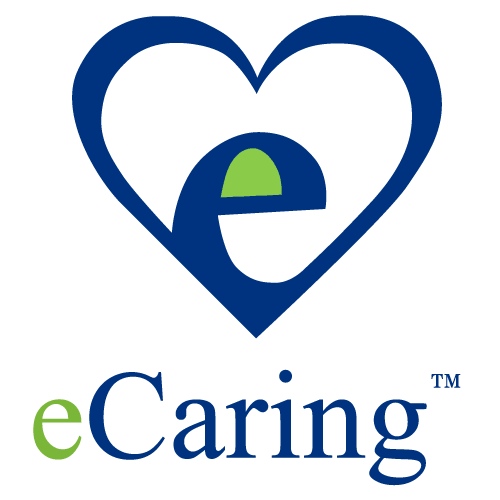Healthtech is rife with buzzwords, cool gadgets and so-called obvious solutions that tend to have limited practical use. Think of these things as the CD-ROMs of the latest iteration of tech. Yeah, next.
We have an aging population. Enabling more seniors to stay in their homes rather than move to a nursing home is one of the major trends in healthcare, and that’s eCaring’s focus. With their unique cloud-based home care management and monitoring system, for the first time, home aides, caregivers and patients themselves, can input and share extensive amounts of information in real time, regardless of their computer skills or English proficiency, thanks to eCaring’s unique icon-based language. The idea is to pick up any changes that indicate a decline in a patient condition or anything that requires a rapid response, and to improve overall patient care. Founder Robert Herzog discusses how he’s disrupting – and improving home care, and how the fresh infusion of funding will help.
Tell us about your product.
While there’s a lot of discussion about using “big data” to improve health care, how useful can health care data be if it excludes the place where most of the critical events in a patient’s life occur — the home. eCaring transforms the home into a powerful real time stream of actionable data. Its unique system enables home aides, caregivers and patients to enter integrated behavioral, clinical and meds adherence data in real time, regardless of language or computer literacy. eCaring has reduced care costs, hospital and ER visits, and readmissions in several programs, with Healthfirst; Metropolitan Jewish Home Services; Beth Israel Medical Center, Jewish Home Lifecare and others.
How is it different?
Until eCaring came along, the home had been a “black box” for generating real time care data. eCaring invented a home care management and monitoring system that uses an intuitive icon-based language for entering home care information, with easy-to-use dashboards for care managers to respond to care conditions. By generating comprehensive, real-time health care information from patients’ homes for the first time, eCaring fills the missing link in care management: actionable home health care data that connects patient, care providers and families so they can intervene earlier to prevent small problems in the home from becoming big ones in the hospital. In addition, eCaring effectively uses health care cost savings to provide Internet-connected tablets in the homes of low-income patients who otherwise have no web access.
What market you are targeting and how big is it?
Our primary markets include: managed care organizations, hospitals, payers and home care agencies. The markets are huge. eCaring has had great success, for example, with reducing costs for Medicaid/Medicare dual eligibles; there are nine million duals in the US who cost $300 billion a year. In trials, eCaring’s system significantly reduced hospital readmissions; there are an estimated four million preventable readmissions annually in the US costing over $31 billion.
What’s your business model?
Our primary revenue source is subscriptions, on a per patient/per month basis. We project generating revenues for providing other services through the tablet we place in the patient’s home, such as educational, ordering prescriptions, transportation and meals, as well as data mining, since we generate huge amounts of unique home care data.
What was the funding process like?
Surprisingly difficult, ultimately rewarding.
What are the biggest challenges that you faced while raising capital?
We bring digital media to health care IT. While we generate a highly sophisticated database, we make entering information and using the data very simple. Funders seemed more enamored with more obvious tech solutions, such as sensors and telemonitors. While eCaring can be complementary to these systems, as the hub of home health care information, our analysis indicates that the expense and limited data such systems provide means they will have limited penetration for many years. But we got a lot of ‘No’s” because of that orientation.
What factors about your business led your investors to write the check?
We’re a unique, great system! Further, we provide access to huge markets at relatively low development costs. And we have built a proven service for lowering health care costs while improving quality.
How did working with Pilot Health help you?
Pilot Health gave us the opportunity to develop eCaring Independent, a new template version of our system for seniors and chronically ill living on their own. We also developed Spanish, Chinese and Russian translations of our system through the program. What was terrific was working with Pace University; bright, energized people who added a lot to our development process. It was almost like getting extra staff at no cost, and we continue to develop new ventures in partnership with them.
What are the milestones you plan to achieve in the next six months?
We are transitioning from trial programs to larger deployments with several of our key customers, including Healthfirst, Metropolitan Jewish Home Services, Jewish Home Lifecare, and others. We expect to add new customers as well. We are also developing some major new features, enhancing our Alert Services, reports, and creating a scheduling module to provide fuller services to home care agencies.
What advice can you offer companies in New York that do not have a fresh injection of capital in the bank?
Make what you have last, and persevere. Last year, I tell people, we were a Hanukkah oil startup — we made one month’s worth of money last for eight months! So long as you are getting feedback from users that what you have is meaningful to them, keep at it. If that’s not happening, time to rethink.
Where do you see the company going now over the near term?
Our goal is to be the go-to company for home health care management, a ubiquitous source of critical data for care and disease management. In the near term, we expect to expand our customer base while continuing to provide customizable and configurable data sets, alerts and other services to fulfill our mission.





